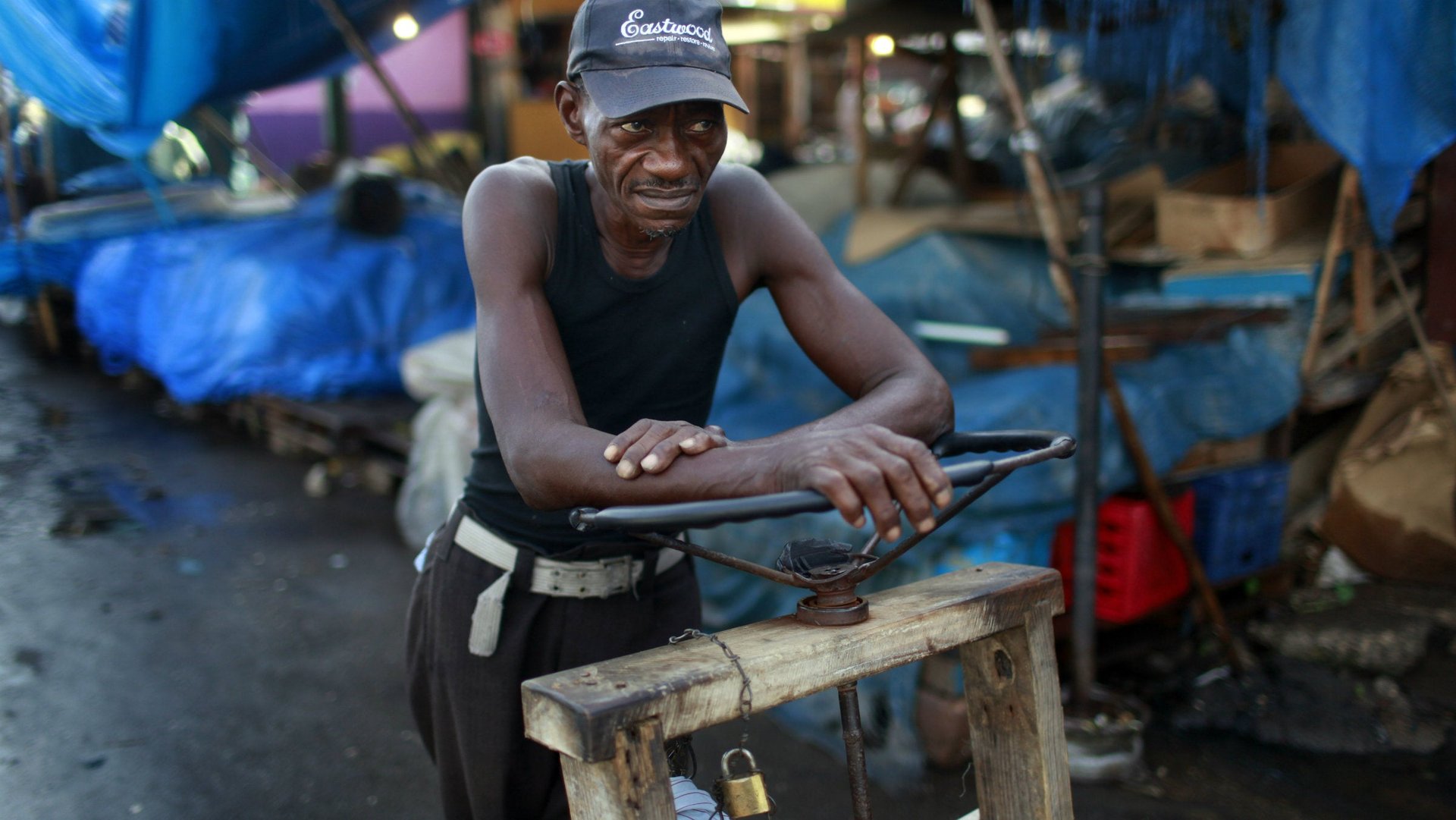What developed economies can learn from Jamaica
In my native Jamaica, hardscrabble industry manifests everywhere: Pushcarts in saturated colors are deployed across the island—bits of scrap lumber slapped together with cast-off wheels and a steering column, then piled high with coconuts and pineapples or weighed down with a hodgepodge of extension cords, toilet plungers, and belts for sale. On the outskirts of Kingston, a tire repair shop as unlikely as it is ingenious runs on machines made by hand from discarded car parts no longer useful for their original purposes.


In my native Jamaica, hardscrabble industry manifests everywhere: Pushcarts in saturated colors are deployed across the island—bits of scrap lumber slapped together with cast-off wheels and a steering column, then piled high with coconuts and pineapples or weighed down with a hodgepodge of extension cords, toilet plungers, and belts for sale. On the outskirts of Kingston, a tire repair shop as unlikely as it is ingenious runs on machines made by hand from discarded car parts no longer useful for their original purposes.
It is tempting to dismiss these microbusinesses that function outside the formal economy. But the ability to build something new from broken pieces is precisely the skill that business leaders in the United States, Europe, and other advanced nations need to renew prosperity.
It’s time to take a page from the Jamaican pushcart playbook.
Old Parts, New Engine
In advanced economies, the weak recovery and ongoing crises have revealed the broken-down nature of financial systems and business models that are either ill-advised or no longer (as) relevant to a changing global economy. Bank lending—down $85 billion in the UK alone since 2008—remains far below its pre-crisis levels; worse than idling, its engine has stalled.
As dean of NYU’s Stern School of Business, I am often asked about the future of the financial services industry. The question implied is, “As a finance powerhouse, aren’t Stern’s days as a leading business school numbered now that the financial sector is in demise?” My answer is that the world needs finance, but leaders of the industry must re-imagine its role in a rapidly changing world.
During the first decade of this century, banks exploited frothy real estate markets to originate shaky mortgages and sell derivative securities. These practices generated wealth but also wreaked havoc. Now many construction and financial services jobs in advanced economies have evaporated, and little has emerged to fill the void left by the collapse of this easy-money lending. At the end of 2012, the average loan-to-deposit ratio for the top eight commercial banks in the United States was at its lowest point in five years.
Until the financial services industry alters its broken model, re-channeling lending to more sustainable sources of profit, it will remain in the ditch. It’s natural, of course, to want to restore what is broken, lost, or damaged (in this case, real estate lending in advanced economies), but at some point businesses and banks have to adapt and reinvent their products to meet different needs. Like the Jamaican pushcart builder or the tire repairman, we need to salvage what’s usable (e.g., bank lending) in the service of something new.
Add Wheels (Go Where Consumers Live)
Emerging markets know about reinvention. Nations formerly crippled by debt and poverty have engineered a remarkable turnaround and now account for more than 50% of global growth. Urbanization is a big part of the story. The United Nations projects that an additional 2.9 billion people will live in cities by the year 2050. Virtually all of the increase will take place in emerging markets.
The ongoing process of urbanization presents a two-fold opportunity—for the hobbled financial services industry and for the many corporations whose domestic customer base still struggles to regain purchasing power and can’t provide the growth that advanced economies need.
A recent report by McKinsey Global Institute finds that cities in the emerging world will require an estimated $10 trillion of additional infrastructure investment by 2025. This process of urbanization has the potential to generate tremendous value for business—and society, if investments prioritize health care, water, sanitation, and other key necessities. Forward-looking banks have an opportunity to finance cities of the future, be catalysts for employment at home and abroad, and in the process rehabilitate their tarnished reputations.
Reinvention also applies to the way businesses approach the potential customers who will live in newly developed urban areas. The people who will inhabit these cities constitute the greatest single source of future growth in consumer demand. The future belongs to those companies who can adapt their strategies for marketing, distribution, and sales to developing nations where the average customer has a substantially lower but more rapidly rising income than their rich-country counterparts.
Rubble or Renewal?
Looking at a pile of scrap lumber and seeing a vehicle of opportunity requires imagination and a focus on the future. If leaders fixate on past business models and fail to see the link between emerging markets, urbanization, and prosperity for advanced economies, they risk leaving lucrative opportunities on the table. Only those who can see the world with the vision of the Jamaican peddler will build new engines of growth. The rest will be stuck driving pushcarts without wheels.